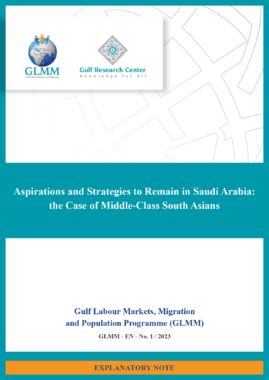Bahrain: Population estimates by nationality (Bahraini/Non-Bahraini) and sex (mid-year estimates, 1991-2023)
| Bahrainis | Non-Bahrainis | Total | ||||
| Males | Females | Males | Females | Males | Females | |
| 1991 | 161,959 | 158,430 | 128,862 | 53,801 | 290,821 | 212,231 |
| 1992 | 165,932 | 162,294 | 132,967 | 55,265 | 298,899 | 217,559 |
| 1993 | 169,973 | 166,278 | 136,615 | 57,359 | 306,588 | 223,637 |
| 1994 | 174,108 | 170,371 | 140,366 | 59,521 | 314,474 | 229,892 |
| 1995 | 178,328 | 174,572 | 144,227 | 61,752 | 322,555 | 236,324 |
| 1996 | 182,648 | 178,882 | 148,207 | 64,055 | 330,855 | 242,937 |
| 1997 | 187,065 | 183,312 | 152,307 | 66,431 | 339,372 | 249,743 |
| 1998 | 191,577 | 187,858 | 156,523 | 68,884 | 348,100 | 256,742 |
| 1999 | 196,190 | 192,524 | 160,866 | 71,409 | 357,056 | 263,933 |
| 2000 | 200,903 | 197,318 | 165,344 | 74,017 | 366,247 | 271,335 |
| 2001 | 206,909 | 202,710 | 179,802 | 71,895 | 386,711 | 274,605 |
| 2002 | 215,813 | 211,433 | 202,383 | 80,924 | 418,196 | 292,357 |
| 2003 | 225,099 | 220,531 | 227,800 | 91,087 | 452,899 | 311,618 |
| 2004 | 234,786 | 230,021 | 256,408 | 102,526 | 491,194 | 332,547 |
| 2005 | 244,890 | 239,920 | 288,610 | 115,402 | 533,500 | 355,322 |
| 2006 | 255,428 | 250,244 | 324,856 | 129,896 | 580,284 | 380,140 |
| 2007 | 266,419 | 261,013 | 365,654 | 146,209 | 632,073 | 407,222 |
| 2008 | 273,612 | 267,975 | 402,978 | 158,931 | 676,590 | 426,906 |
| 2009 | 282,011 | 276,000 | 449,986 | 170,418 | 731,997 | 446,418 |
| 2010 | 288,452 | 282,235 | 475,905 | 181,951 | 764,357 | 464,186 |
| 2011 | 295,878 | 288,810 | 445,605 | 164,727 | 741,483 | 453,537 |
| 2012 | 305,354 | 294,275 | 455,095 | 154,240 | 760,449 | 448,515 |
| 2013 | 312,945 | 301,885 | 475,436 | 162,925 | 788,381 | 464,810 |
| 2014 | 320,839 | 309,905 | 485,648 | 198,170 | 806,487 | 508,075 |
| 2015 | 328,887 | 318,948 | 517,478 | 205,009 | 846,365 | 523,957 |
| 2016 | 336,834 | 327,873 | 551,555 | 207,464 | 888,389 | 535,337 |
| 2017 | 343,340 | 334,166 | 607,972 | 215,638 | 951,312 | 549,804 |
| 2018 | 349,661 | 340,053 | 597,203 | 216,174 | 946,864 | 556,227 |
| 2019 | 355,633 | 346,194 | 564,931 | 216,998 | 920,564 | 563,192 |
| 2020 | 361,979 | 351,284 | 563,057 | 195,884 | 925,036 | 547,168 |
| 2021 | 365,083 | 354,658 | 560,664 | 223,960 | 925,747 | 578,618 |
| 2022 | 361,587 | 352,424 | 585,450 | 225,232 | 947,037 | 577,656 |
| 2022 (12) | 365,501 | 356,156 | 603,605 | 231,920 | 969,106 | 588,076 |
| 2023 | 368,448 | 358,904 | 611,427 | 238,280 | 979,875 | 597,184 |
Source: Information & eGovernment Authority (IGA)
ANNEXED NOTE
- Technical Notes and Definitions
The table provides mid-year intercensal estimates of Bahrain’s total resident population (nationals and non-nationals).
In October 2015, the Bahraini e-Government Authority merged with the Central Informatics Organization to form the Information and e-Government Authority (IGA), which manages and oversees all national digital assets. The IGA maintains, and is part of, the Government Data Network, established in 1994, which links together 300 governmental entities.
Reference dates of censuses:
1941 January 22nd, 1941
1950 March 1950
1959 May 1959
1965 February 13th, 1965
1971 April 1971
1981 n.d.
1991 n.d.
2001 April 7th, 2001
2010 April 27th, 2010
2020 March 17th, 2020
Censuses’ implementation methods:
Until 1981: field enumeration (household survey)+de jure methodology, i.e. counting persons using their usual place of residence irrespective of where are they at census times
1991; 2001: field enumeration (household survey)+ first use of administrative records
2010: mixed census, based on both administrative records and a household survey sample of 15,000 Bahraini and non-Bahraini households.
2020 census was conducted solely on the basis of administrative records on the de jure population of the Kingdom.
Population of reference: all individuals (nationals and non-nationals) usually present within the State’s borders during time of reference.
The nationality of the person is defined by the passport used to enter the country. A non-Bahraini is considered as such depending on the passport used to enter the country (or obtain the visa)
- Institution which provides data
Information & eGovernment Authority (IGA)
- Data availability
Published results of past censuses (until 2020) are no longer available online, as of 07 February 2024.
Some datasets from census 2020 and the present intercensal population estimates are available on IGA’s Bahrain Open Data Portal:
https://bahrain.opendatasoft.com/pages/homepage/
https://bahrain.opendatasoft.com/explore/?sort=modified&refine.theme=Population
Date of access: February 2024
GLMM and GRC cannot guarantee that the link to access the source will not change; that the information will not be removed from the website it was obtained from; that no geo-blockages will be imposed; or that the information will not be available for any another reason.
Keywords: Bahrain, National Population, Foreign Population
Similar Posts:
- Bahrain: Population estimates by nationality (Bahraini/Non-Bahraini) (mid-year estimates, 1991-2023)
- Bahrain: Population estimates by nationality (Bahraini/Non-Bahraini), sex and age group (2018)
- Bahrain: Population by nationality (Bahraini/ non-Bahraini) and sex at dates of census (1941-2020)
- Bahrain: Population aged 15 and above by nationality (Bahraini/ non-Bahraini), sex and relation to labour force (2020)
- Bahrain: non-Bahraini population (aged 15 and above) by sex, age group and marital status (census 2020)




